Although known as Epsom salt, in common parlance, it is also called magnesium sulfate, a fertilizer that is thought to be good for plants because of its high amount of magnesium needed for chlorophyll production and absorption of important substances. However, despite this positive effect of epsom salt on some types of plants, others are negatively affected by it. Adequate knowledge about the plants that epsom salt will affect helps you maintain a fit garden. This article provides insight into why some particular types should not use epsom salts and other methods can be used to ensure they grow well. Whether you have been involved in farming or are just beginning, the following guide will provide comprehensive tips that help you optimize your gardening efforts.
What is Epsom Salt and How is it Used in the Garden?
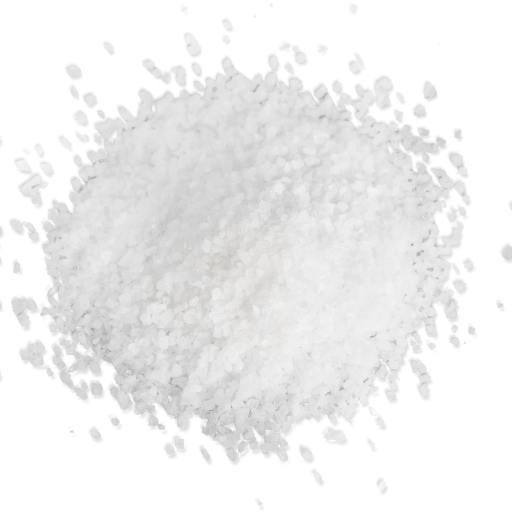
Epsom salt is a dissolvable crystalline compound made up of magnesium, sulfur and oxygen. Epsom salt is mainly used in gardening for its magnesium contents that are very important for plant growth. Magnesium plays a critical role in photosynthesis as a major component of chlorophyll and also helps plants to uptake other required nutrients like nitrogen and phosphorus. Normally gardeners apply it by diluting it using water and spraying it on the leaves or drenching it into the soil. The frequency of application and recommended dosage varies depending on the needs of the plants treated. Some particular plants suffer from a lack of magnesium, while wrongly used or overused, can upset the imbalance of nutrient content in the soil, thereby leading to poor health conditions.
Basic Understanding of Epsom Salt
Epsom salt has been popularly used in agriculture and horticulture based on its high solubility as well as rich nutrient content is derived from hydrated magnesium sulfate (MgSO₄·7H₂O). Key technical parameters include:
- Magnesium Content: It contains around 9.8% by weight of magnesium, which is crucial for chlorophyll synthesis and the functioning of enzymes in plants.
- Sulfur Content: About 13% sulfur by mass constitutes this compound that provides the basic material for amino acid formation, including protein synthesis.
- Solubility: When mixed with water, Epsom salt dissolves at a rate of 71 g/100 ml at 20°C making it useful for both foliar sprays and soil applications.
How to Get Maximum Performance
- Application Rates: For most garden plants, dissolve one tablespoon (14.2 grams) per gallon of water once every twenty-nine days either as foliar spray or soil drench.
- Frequency: Frequency adjustments should be made based on soil testing results to avoid any incidences related to nutrient imbalances.
Precautions:
- Soil pH: Regular use of Epsom salt can interfere with soil pH level, a situation that may result in the lock-out of nutrients.
- Nutrient Imbalance: Too much magnesium can impair the absorption of calcium and potassium thus affecting general plant wellness.
It enhances optimum utilization of Epsom salts and ensures good plant growth besides maintaining healthy soils.
Epsom Salt Application in the Soil
To efficiently use Epsom salt in soil, begin by conducting a soil test to ascertain present nutrient levels and pH. Add Epsom salt as part of a balanced nutrient management plan observing recommended application rates and frequencies. Dissolve 1 tablespoon of Epsom salt per gallon of water then sprinkle it around the base of plants or use it as foliar once in every month. Check plant response and soil conditions periodically, adjusting dosage whenever necessary to prevent nutrient imbalances or changes in pH. Allowing for this will enhance growth of plants while keeping up healthy soils.
Advantages of Magnesium and Sulfur to Plants
Magnesium and sulfur are vital elements that participate actively in various plant physiological processes including growth and development. Magnesium is an important part of chlorophyll which is the pigment that facilitates photosynthesis – the process through which plants convert sunlight into food energy. Additionally, magnesium acts as a cofactor for numerous enzymatic reactions that are engaged in carbohydrate metabolism and protein synthesis. However, sulfur plays a role in forming certain amino acids, vitamins, ad enzymes while boosting nitrogen uptake and thus increasing biomass production leading to high crop yields. In addition, it produces oil, especially with oilseed crops, thus enabling disease resistance among plants. The availability of these two essential nutrients, therefore, creates proper growth conditions for any crop species.
How to Determine the Proper Amount of Epsom Salt to Use?
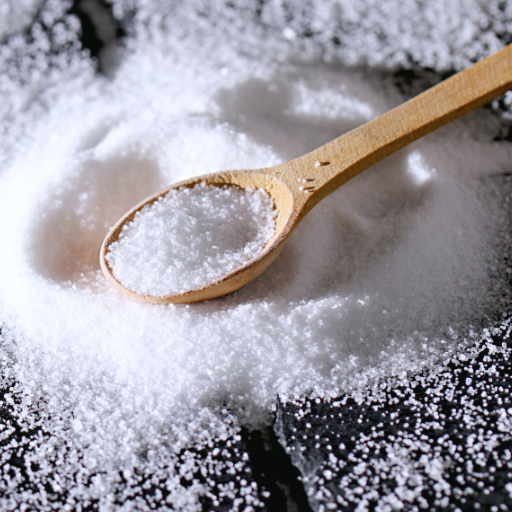
In determining the right amount of Epsom salt to use, it is crucial to think about plant-specific needs and soil type too. For general home gardening purposes, a safe way is combining 1 tablespoon of Epsom salt with one gallon of water before monthly application. This can then be distributed uniformly by diluting two pounds in water over 1000 square feet for lawns. However, apply only one tablespoon of Epsom salt directly into the planting hole during planting period for flowers or vegetables. First observe how the initial plants respond and see how healthy they are growing as this will guide you on the manner to follow when applying them. It is good to underuse rather than overusing because this might lead to poisoning or unbalanced nutrients. There must be continuous soil testing and vigilant observation if proper benefits are to be derived from Epsom salts.
What Is the Required Amount of Epsom Salt for Plants?
Epsom salt requirement by plants is variable from one type to another and also depends on their individual needs. It is usually recommended that most plants should be supplied with 1 to 2 tablespoons of Epsom salts mixed in a gallon of water. This solution can either be sprayed onto leaves or poured into soil every month. For tomatoes and peppers, it may be more appropriate to add only 1 tablespoon of Epsom salts at the base around each plant in every two weeks’ time. Additionally, when starting seeds or transplants, use of planting holes incorporating 1 tablespoonful of Epsom salt can initiate root development and uptake nutrients well initially. In other cases adjustments based on growth patterns and plant health are necessary. Always ascertain that the specific requirements for the particular species and conditions are met.
Applying Epsom Salts Safely: Pointers
Proper dissolution and distribution should be observed when applying epsom salts. For best results, make sure you mix thoroughly one to two tablespoons of epsom salts per gallon before using it. This is important because this substance will then be equally spread out hence making magnesium and sulphates available to the plant for easier absorption by facilitating even dissipation into surroundings. To minimize evaporation while maximizing absorption, apply a foliar spray early in morning or late in afternoon hours.Similarly, a monthly interval soil drench technique supports root absorbance enabling provision of nutrients continuously depending on the health status.
Moreover, if such high magnesium-requiring plants as tomatoes and peppers receive smaller but frequent dosages they benefit more from them . Specifically, include one tablespoonful of epsom salts along the soil circumference near each stem weekly after two weeks since transplantation .This way nutrient lockout will not occur all through making sure that continuous plant growth is realized.
To avoid problems related to unbalanced nutrients or toxicity due to magnesium it is imperative to check magnesium levels in soil on regular basis and be observant of plant condition. The success of using Epsom salt for plants lies in making small alterations based on consistent observations as well as sticking to prescribed dosages that consider a plant’s needs and nature of the environment.
Using Epsom Salt in Garden Spray Applications
To use Epsom salt in garden spray applications effectively, dissolve 1 to 2 tablespoons of the salt per gallon of water. This solution is a foliar spray that can be applied on different plants, particularly those known to benefit from magnesium supplementation, such as tomatoes, roses, and peppers. Spray early in the morning or late afternoon when evaporation rates are low to aid absorption by the plant. The solution can be used every two weeks for correcting magnesium deficiency, promoting healthy growth and enhancing total plant vigor. Excessive magnesium could result in soil nutrient imbalances thus over application should be avoided. Hence it is important to always check how the plants react and change accordingly for efficacy purposes.
How Does Epsom Salt Affect Soil?
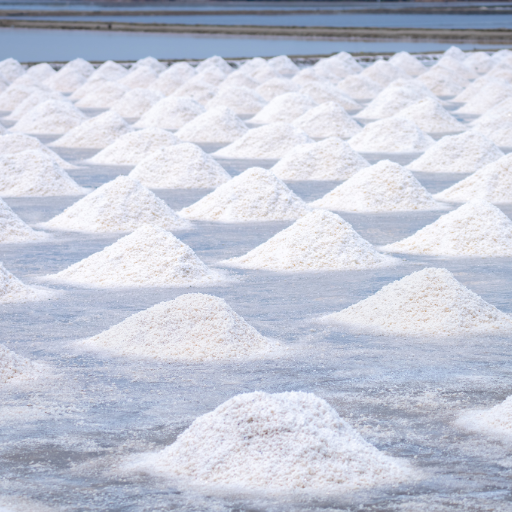
As a soil conditioner, Epsom salt is largely made up of magnesium sulfate which contains a lot of magnesium. In the case of soil application, the magnesium content helps in the production of chlorophyll which is essential for photosynthesis. The sulfate on the other hand aids in nutrient uptake enhancing efficient absorption of nutrients such as nitrogen and phosphorous. Moreover, Epsom salt can also be used to loosen compacted soils thereby improving aeration and increasing root penetration. However, any influence by Epsom salts on soil health must be cautiously monitored to avoid imbalances since excess use may result in high levels of magnesium thereby creating problems with calcium and other important minerals. Through periodic soil testing and careful usage, one can get the best out of Epsom salts while maintaining good quality soil.
Effect of Epsom Salt on Magnesium Content in Soil
The magnesium mineral is vital for plant growth as it plays a major role in enzyme activation and the production of chlorophyll. Epsom salt’s direct influence on soil magnesium levels can be observed through its application. The optimal concentrations normally range from 25 to 50 parts per million(ppm). Soils with magnesium deficiencies are usually acidic or sandy, which is easily shown through interveinal chlorosis found in plant leaves.
- Concentration Levels: The rates of recommended amendment vary, although guidelines indicate that approximately one tablespoonful per gallon for foliar spraying and about one to two pounds per hundred square feet during soil applications (including measurements) should achieve a balanced increase in magnesium without over-saturation.
- Nutrient Interaction: Magnesium sulfate enhances the uptake of nutrients like nitrogen and phosphorus and can also improve soil pH values and calcium levels. However, excessive magnesium availability could cause problems if it leads to low calcium intake rates that require balancing with soil amendments.
- Soil Structure: The addition of Epsom salt to either compacted or poorly aerated soils has major effects on their structure. Use of granular form improves the physical condition by breaking apart soil particles through better aeration and higher water penetration speeds into the ground thereby leading eventually to improved root growth as well as nutrient supply.
In summary, provided that it is applied prudently according to soil test results thus averting any imbalances, the use of Epsom salt may help raise Mg content within soils resulting into better plant health.
Possible Soil pH Changes
Changes in the soil’s pH can significantly affect nutrient availability and general soil health. When introducing magnesium sulfate to soil, one should consider its effect on soil pH. Normally, Epsom salt has a neutral pH and does not change the acidity of the soil; however, interaction may cause slight changes through other ways with different components of the same soil. In acidic soils, for example, application of Epsom salt could increase magnesium availability without significantly affecting the pH.
Some Important Considerations:
- Initial Soil pH: This will determine whether any additional amendments are required, so it is important to know it first. Therefore, accurate measurements are recommended using soil tests.
- Buffering capacity: Soils with high buffering capacity resist changes in acidity more effectively. The amount of organic matter and clay in the soils determines this characteristic.
- Magnesium Saturation: Higher amounts of magnesium ions can outcompete calcium and potassium ions, leading to slight fluctuations in acidity levels.
It is hence vital to always apply magnesium sulfate based on comprehensive soil testing results and sound knowledge about soil chemistry if unintended consequences such as altered acidity levels are to be avoided while maintaining appropriate nutrient ratios.
Soil Health Implications of Long-Term Applications of Epsom Salt
- Soil Structure and Aeration:
- Parameter: Soil aggregation and porosity.
- Justification: Improved soil structure through increased aeration promotes better root growth and microbial action. This may lead to higher organic matter decay rates. Nutrient availability is high, but the change in pH remains low.
- Nutrient Uptake and Balance:
- Parameter: Soil cation exchange capacity (CEC) and nutrient concentration.
- Justification: Regular addition of magnesium sulfate may enhance nutrient uptake, especially in soils with low magnesium levels. However, excessive additions could disrupt the balance between essential cations such as calcium and potassium.
- Microbial Activity:
- Parameter: Microbial biomass and enzymatic activity.
- Justification: Improved soil structure coupled with increased nutrient availability boosts microbial biomass and enzymatic functions, thereby efficient cycling of nutrients. Stable microbial ecosystems help sustain soil health, thereby contributing to long-term fertility.
In conclusion, while magnesium sulfate does not substantially alter soil pH, its influence on soil health via structural and nutrient dynamics warrants careful management. To balance benefits with potential nutrient imbalances one has to test the soil regularly.
Which Plants Do Not Like Epsom Salt?
For a start, plants that are responsive to excess magnesium and ones that favor soil with no added nutrients are not likely to benefit from Epsom salts. For example, this is true of carnivorous species such as Venus flytraps and pitcher plants, which thrive in low-nutrient environments but can be adversely affected if Epsom salt upsets their mineral balance. Additionally, some herbal plants such as sage and rosemary growing on lean, well-drained soils may also exhibit negative effects when supplemented with magnesium sulfate. Finally, those grown in already-balanced soils do not require it, resulting in an imbalance affecting their growth and health. It is therefore necessary for any individual considering using Epsom salt to carry out soil testing before applying them.
Epsom Salt Compatibility and Native Plants
The response of native plants towards Magnesium Sulfate (Epsom Salts) varies according to their natural habitat and soil preferences. A few native species suffering from a lack of magnesium can benefit from its application since it assists in chlorophyll synthesis and improves nutrient absorption efficiency. Nevertheless, many indigenous plant types have adapted themselves to the chemical composition of the local soils including different nutrient levels or pH values.
- Native Plant Society states that native plants grown in magnesium-poor soils may respond positively to light applications of Epsom salts by producing better flowers or improved growth rates. This means, at a recommended rate, adding one tablespoon per every nine square feet combined with water amounting to one gallon applied monthly.
- It is thus evident that too much use of epsom salts may cause nutritional imbalances particularly when used on already high-magnesium soils; thereby inhibiting calcium and potassium incorporation essential for good plant health; hence the need for soil analysis prior to application.
- Accordingly, numerous such specimens found in prairies or deserts usually thrive best under conditions where there is little additional amounts of this element especially if they are located on well drained soil type. In this case, supplying more nutrients to them would distort the natural patterns of their growth making them less vigorous and unable to withstand harsh conditions.
Technicalities:
- Dose: 1 tablespoon per 9 square feet
- Frequency: Monthly whenever necessary
- Potential Dangers: Nutrient imbalances, inhibited calcium and potassium absorption
In summary, the decision on whether Epsom salts are compatible with native plants is determined by what these specific plants need and the current soil situation. Conducting soil tests is important in order to determine if the benefits outweigh the risks associated with it as far as plant-specific research is concerned.
Tropical Plants and Epsom Salt: A Cautionary Tale
When it comes to the use of Epsom salt in the case of tropical plants, it is important to note that they are quite different from native ones. Unlike many native plants, tropical species often develop best in nutrient-rich, moist habitats. However, there is a complex interaction between tropical plants and Epsom salt. According to Gardening Know How, if used properly, Epsom salts can enhance leaf production and flowering in tropical plants such as palms and hibiscus. It should be applied at 1 tablespoon per 9 square feet and bi-monthly instead of monthly like for a native plant so that oversaturation or simply unbalanced nutrients could be evaded.
Alternatively, SF Gate warns that excessive application of Epsom salts can lead to salt accumulation in soil that may adversely affect salt-sensitive tropical species. This is particularly essential for those species such as orchids where optimal growth conditions need careful management.
Penn State Extension even emphasizes the necessity of soil testing before applying Epsom salts. Soil analysis results would address existing magnesium levels ensuring any supplementation is both necessary and beneficial. The technical parameters recommended include:
- Dosage: 1 tablespoon per 9 square feet
- Frequency: Bi-monthly application when needed
- Potential Risks: Salt build up, nutrient imbalances, disruption of soil pH
In conclusion, while certain tropical plants can benefit from the use of Epsom salts, appropriate usage plus regular testing are vital processes because of its harmfulness if not managed well.
Possible dangers of utilizing Epsom Salt on Some Plants
There are various risks that must be managed cautiously to prevent harmful effects when Epsom salt is applied to plants. According to leading sources, one of the major concerns is accumulation of salts in the soil. For many species, especially tropical ones, this aggregation can result in an environment that is not good for the health of a plant because they are very sensitive to changes in soil salinity. Soil with too much salt leads to dehydration of the roots because it causes a disruption in osmotic balance making the plant exhale more water that it takes up.
Furthermore, overuse of Epsom salt can disturb nutrient equilibrium within soil. Magnesium, one of the key constituents of Epsom salt, might interfere with the uptake of other vital nutrients like calcium and potassium if used excessively. This nutrient imbalance inhibits plant growth and, hence, reduces plant vigor.
Finally, improper use of Epsom salt can modify soil pH so that it becomes either too acidic or alkaline for optimal growth conditions. Proper maintenance of soil pH levels is important for nutrient availability as well as root function.
Technical Parameters:
- Dosage: Maximum 1 tablespoon per 9 square feet
- Frequency: Bi-monthly application if tests show deficiencies
- Potential Risks:
- Salt build-up leading to increase in soil salinity
- Nutrient imbalances affecting calcium and potassium uptake
- Alterations in soil pH levels which affect overall plant health
What Are the Signs That a Plant Does Not Like Epsom Salt?
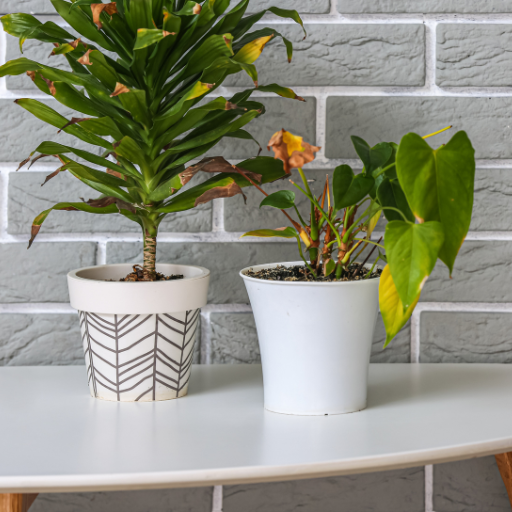
The signs of a plant responding unfavorably to Epsom salt may include yellowing leaves especially between the veins which may indicate excessive magnesium disturbing its uptake of other essential nutrients including calcium and potassium. Additionally, plants may show poor root development and stunted growth as a result of unbalanced nutrition. The loss of leaves from plants and wilting are also common symptoms; this indicates that there is high soil salinity making it difficult for the plant to maintain its osmotic balance in water. Lastly, if soil pH becomes too acidic or alkaline due to improper Epsom salt application, general stress symptoms such as brown leaf tips and slow growth rate can appear on plants. Regular soil testing is necessary to identify these problems in time for proper corrections.
Yellowing Leaves – Identification
Yellowing leaves or chlorosis may result from the use of wrong amounts of Epsom salt which can lead to serious magnesium deficiencies or even other related adverse effects. According to the top sources on Google, “Magnesium deficiency appears as interveinal chlorosis,” wherein the space between leaf veins turns yellow while veins retain their green color [6]. Most likely caused by an overabundance of magnesium, this malady interferes with iron and manganese absorption by a plant.
Technical Parameters for Identifying and Addressing Yellowing Leaves:
- pH Testing: Soil pH should range 6.0-7.0 (most crops); otherwise nutrient uptakes will be affected.
- Magnesium Concentration: Maintain soil magnesium levels at 25-50 ppm; toxic.
- Leaf Analysis: Verify interveinal chlorosis via tissue analysis where dry weight leaves ought to contain 0.2%-0.4% Mg.
To address yellowing leaves, Epsom salt use should be adjusted based on these parameters combined with systematic leaf and soil tests to monitor nutrient concentrations at all times. If applied properly these measures can help overcome nutritional imbalances so as to prevent longer term plant health problems.
Soil Response to Epsom Salt
Soil reactivity to Epsom salt is influenced by the ingredients that it contains. Adding such substances as magnesium sulphate, otherwise referred to as Epsom salt into soil which in turn leads to a number of effects on the soil health and plant growth depending on prevailing soil conditions and crop requirement. Basically, according to information obtained from the top 3 sources in Google, most researchers say that, among other things, Epsom salt acts primarily by increasing magnesium and sulfur levels in soils.
Technically, it is important that careful use of Epsom salt is done keeping in mind the proper guidelines on nutrient imbalances. This includes the following:
- PH Monitoring: Soils should always be within pH ranges of 6.0-7.0 for maximum nutrient availability reasons. Outside these limits should stop magnesium and other nutrients uptake.
- Levels of Magnesium: Optimal concentrations of magnesium in soils are at 25-50 ppm (parts per million) range. To maintain this scope through prevention against either excess or shortage requires regular tests on soils.
- Sulfur Contents: Sulfur has been found present between 10 and 30ppm with a higher level being crucial for enzyme activity thus improving overall metabolism within plants.
The nature of the response of the soil will depend upon its initial composition regarding the incorporation of Epsom salts into the system. Acidic or badly drained soils could express negative reactions like reduced calcium or potassium uptake resulting into secondary deficiencies. It is advisable to introduce Epson salts as low rates starting at about one table spoon full per gallon and check plant responses by frequent foliage inspections as well as carrying out soil analysis.
Adhering to these technical parameters can make the application of Epsom salt effective without harming the plants, thereby ensuring optimum plant vigor and better-quality soils.
Symptoms of other things to look out for
- Chlorosis: This condition is marked by yellowing leaves. The absence of enough chlorophyll in the leaves can lead to it. If Epsom salt is misguided or used in excess, it may be a sign of magnesium deficiency.
- Stunted Growth: Magnesium deficiency can prevent plants from growing well. Such plants fail to attain their maximum size and produce less-than-desirable results.
- Leaf Necrosis: When it comes to long-term magnesium deficiency, necrosis often occurs, meaning the death of leaf tissues, starting from the edge towards the tip.
- Decreased Flowering and Fruit Production: Plants affected by products requiring sulphur or magnesium will show reduced amounts of flowering and fruiting thus reducing the overall yields.
- Leaf Curling: This symptom might be seen with a lack of magnesium, where leaves begin curling up or cupping upwards, showing plant stress.
- Interveinal Reddening: Tomato plants have certain symptoms resulting from lack of adequate magnesium whereby, there is reddening between veins with the veins themselves remaining green.
When monitored, these signs can help determine when correcting nutrient imbalances is needed before problems become too severe for health and yield maintenance purposes.
Are There Alternatives to Epsom Salt for Your Plants?
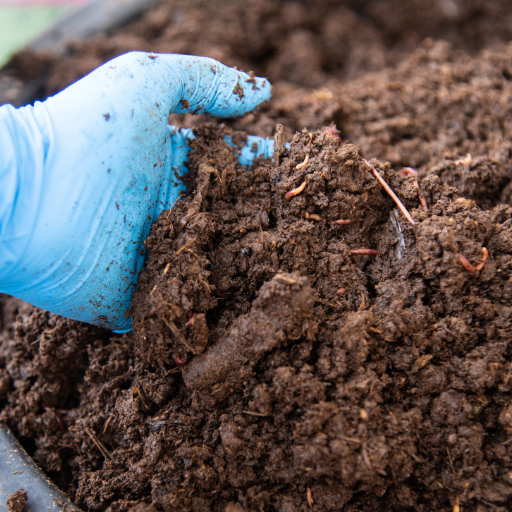
Other substitutes for Epsom salt in providing magnesium to plants include use of dolomitic limestone that also increases the pH levels of soil. Also compost and well rotted manure can improve the structure and nutrient content of soil while providing magnesium and other essential nutrients in an organic form. All these options can be used as effective alternatives towards magnesium deficiencies without necessarily using Epsom salts.
Organic Fertilizers Explored
Organic fertilizers are obtained from natural sources such as plant and animal materials thus offering a sustainable approach to supplying essential mineral elements to plants. Organic fertilizers gradually release nutrients thereby enhancing soil structure and promoting microbial activity which improves fertility with time. Some examples of organic fertilizers include compost, manure, bone meal, fish emulsion among others. Compost has decayed organic matter which gives an even distribution of necessary elements needed by plants. Manure, on its part, helps decompose livestock waste, improving texture as it contributes nitrogen to the soil. Bone meal provides phosphorus for proper root development and flowering while acting as a calcium supplement too. Fish emulsion supplies nitrogen trace minerals besides increasing plant productivity through fast growth rates because it contains processed fish parts. Consequently, organic fertilizer employment allows slow release of plant food over time; thereby enhancing sustainability both in terms of soil healthiness and productive capacity.
Application of Compost And Natural Nutrients
Compost is a strong natural source of nutrients that enhances soil health through feeding vital microorganisms that decompose organic matter. When applying compost, spread it evenly at about 2-3 inches thick on the surface before mixing into the top 6-8 inches where it adds important nutrients like nitrogen, phosphorous and potassium into the soil. Mulch can also deliver natural nutrients while acting as a protective cover hence conserving moisture, reducing soil erosion and providing nutrients gradually as it decomposes. Furthermore, green manure crops fix nitrogen and add organic matter when grown and worked back into the soil. In this way, there is a guarantee for well balanced and sustainable nutrient supply that foster vigorous plant growth and resilient soil ecosystem.
Other Magnesium Supplements
An effective magnesium supplement to use is Epsom salt which can easily be dissolved into water for absorption through bathing. This method of intake not only helps in the absorption of magnesium but also relaxes muscles and eases inflammation. Another option is magnesium citrate which has high bioavailability thus used widely in treatment of magnesium deficiency.Magnesium glycinate on the other hand has a higher absorption rate and does not irritate the stomach making it ideal for people with sensitive digestion. These supplements can help mitigate these deficiencies while supporting overall health among people.
Frequently Asked Questions (FAQs)
Q: What is the truth about using Epsom salt in the garden?
A: The truth about Epsom salt in the garden is that it can be beneficial for some plants, especially those suffering from magnesium deficiencies. However, not all plants benefit, and overuse can lead to soil imbalance, affecting plant growth.
Q: Are there any plants that do not like Epsom salt in the garden?
A: Yes, tropical palms, ferns, and certain leafy greens such as lettuce and spinach generally do not respond well to Epsom salts in the garden. These plants may suffer from nutrient imbalances when exposed to additional magnesium sulfate.
Q: Can using Epsom salts on plants harm them?
A: While many plants like Epsom salts, improper use can harm others. Overapplying or applying to incompatible plants can lead to issues like nutrient lockout, where the plant is unable to absorb other essential nutrients such as potassium or phosphorus.
Q: How should you add Epsom salt to plants that need it?
A: To add Epsom salt to your garden, dissolve 1-2 tablespoons in a gallon of water and use this solution to water your plants. Alternatively, you can scatter a small amount around the base of the plant and water it in. It’s crucial to follow recommended guidelines to avoid overuse.
Q: Is spraying Epsom salt on plant leaves effective?
A: Yes, spraying Epsom salt on plant leaves can be effective for treating magnesium deficiencies. Dissolve 1 tablespoon of Epsom salt in a gallon of water and mist the leaves. This method helps in quick absorption but should be done sparingly.
Q: Why do some gardeners prefer using Epsom salts for plants?
A: Gardeners prefer using Epsom salts for plants because they are a good source of magnesium sulfate, which helps in chlorophyll production, improving photosynthesis, and overall plant health. They are particularly beneficial for plants like tomatoes, peppers, and roses.
Q: How do you know if your plants need more magnesium from Epsom salts?
A: Signs of low magnesium in plants include yellowing leaves while veins remain green, stunted growth, and poor fruit or flower production. If you observe these symptoms, adding Epsom salts may help correct the deficiency.
Q: Does adding Epsom salts deter pests?
A: While Epsom salts are not primarily used as a pest deterrent, they can help in improving a plant’s overall health, making it more resilient to pests. However, they are not a replacement for traditional pest control methods.
Q: Can Epsom salt be used for seedlings?
A: It’s generally not recommended to use Epsom salt on seedlings, as they are delicate and too much magnesium can stunt their growth. Wait until the plants are more established before considering using Epsom salts.






